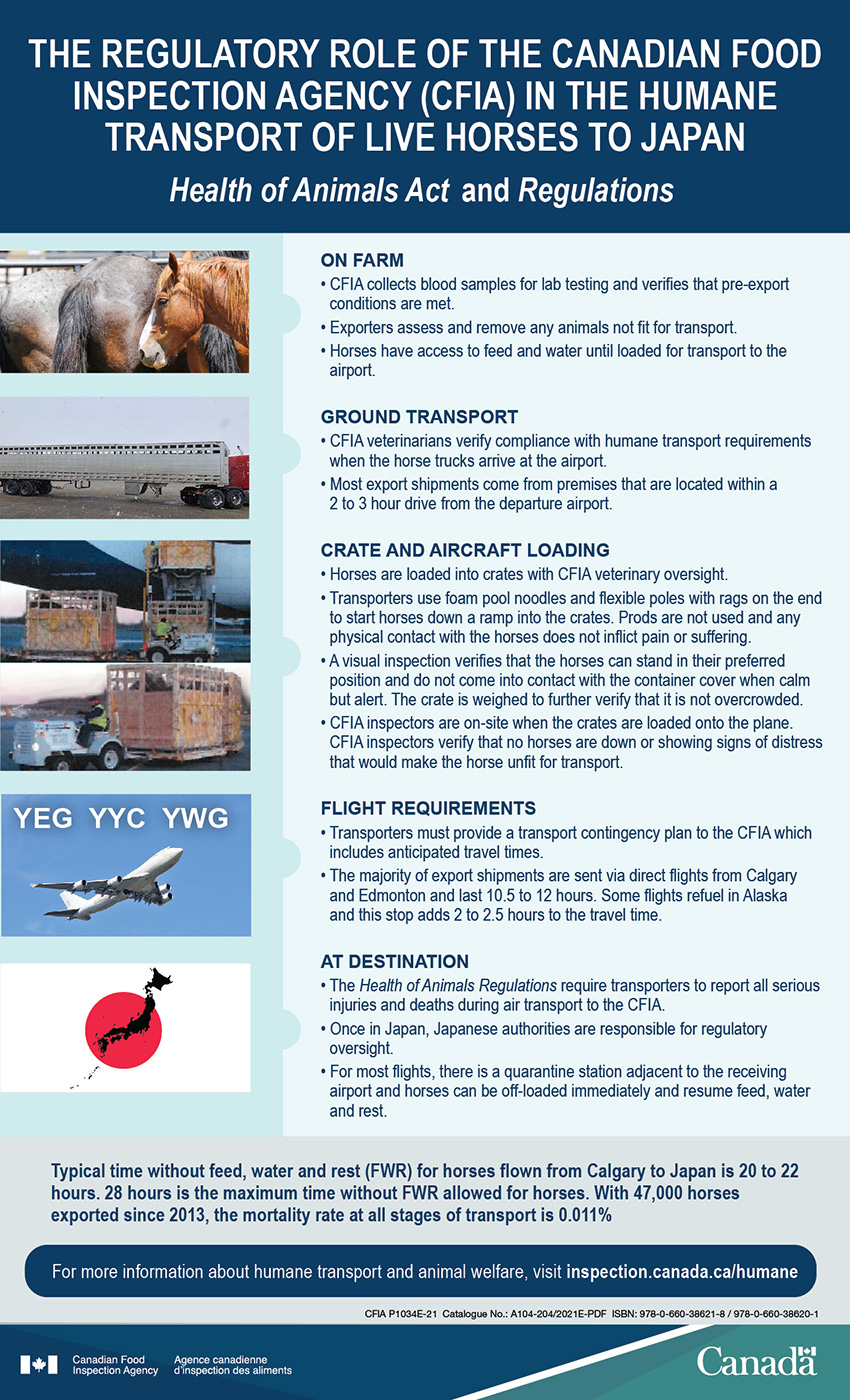The regulatory role of the CFIA in the humane transport of live horses to Japan – Health of Animals Act and Regulations

Description of infographic – The regulatory role of the CFIA in the humane transport of live horses to Japan
On farm
- CFIA collects blood samples for lab testing and verifies that pre-export conditions are met
- Exporters assess and remove any animals not fit for transport
- Horses have access to feed and water until loaded for transport to the airport
Ground transport
- CFIA veterinarians verify compliance with humane transport requirements when the horse transport trucks arrive at the airport.
- Most export shipments come from premises that are located within a 2 to 3 hour drive from the departure airport.
Crate and aircraft loading
- Horses are loaded into crates with CFIA veterinary oversight.
- Transporters use foam pool noodles and flexible poles with rags on the end to start horses down a ramp into the crates. Prods are not used and any physical contact with the horses does not inflict pain or suffering.
- A visual inspection verifies that the horses can stand in their preferred position and do not come into contact with the container cover when calm but alert. The crate is weighed to further verify that it is not overcrowded.
- CFIA inspectors are on-site when the crates are loaded onto the plane. CFIA inspectors verify that no horses are down or showing signs of distress that would make the horse unfit for transport.
Flight requirements
- Transporters must provide a transport contingency plan to the CFIA which includes anticipated travel times.
- The majority of exports shipments are direct flights from Calgary and Edmonton, and last 10.5 to 12 hours. Some flights refuel in Alaska and this stop adds 2 to 2.5 hours to the travel time.
At destination
- The Health of Animals Regulations require transporters to report all serious injuries and deaths during air transport to the CFIA.
- Once in Japan, Japanese authorities are responsible for regulatory oversight.
- For most flights, there is a quarantine station adjacent to the receiving airport and horses can be off-loaded immediately and resume feed, water and rest.
Typical time without feed, water and rest (FWR) for horses flown from Calgary to Japan is 20 to 22 hours. 28 hours in the maximum time without FWR allowed for horses. With 47,000 horses exported since 2013, the mortality rate at all stages of transport is 0.011%
More information on humane transport and animal welfare
- Date modified:
